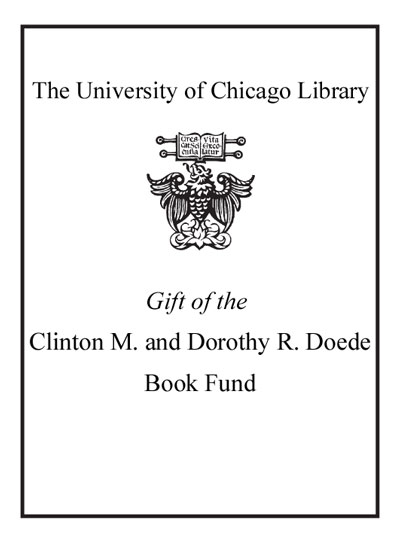Cancer therapies /
Saved in:
| Author / Creator: | Barton-Burke, Margaret. |
|---|---|
| Imprint: | Sudbury, Mass. : Jones and Bartlett Publishers, c2006. |
| Description: | xi, 364 p. : ill. ; 23 cm. + 1 CD-ROM (4 3/4 in.) |
| Language: | English |
| Subject: | |
| Format: | Print Book |
| URL for this record: | http://pi.lib.uchicago.edu/1001/cat/bib/6092258 |
Table of Contents:
- Chapter 1. The Biological Basis of Cancer
- Introduction
- Basic Genetics
- DNA Structure
- DNA Replication
- Implications for Chemotherapy
- Gene Function
- Biology of Normal Cells
- Features of Normal Cells
- Apoptosis
- Biology of Cancer Cells
- Features of Cancer Cells
- Malignant Transformation (Carcinogenesis)
- Summary
- References
- Chapter 2. Cancer Chemotherapy and Cell Cycle Kinetics
- History of Cancer Therapy
- Advent of Cancer Chemotherapy
- The Cell Cycle and Its Importance
- Cell Cycle Phase-Specific Agents
- Cell Cycle Phase-Nonspecific Agents
- Chemotherapy and Cell Kinetics
- Tumor Growth
- Cell Kill Hypothesis
- Relevance of Cytostatic Versus Cytotoxic Agents in Designing Chemotherapy Regimens
- Classification of Antineoplastic Agents
- Alkylating Agents
- Antimetabolites
- Antibiotics
- Plant Alkaloids (Mitotic Inhibitors)
- Hormones
- Miscellaneous Agents
- Camptothecins
- Investigational Chemotherapeutic Agents
- Rationale of Single-Agent Therapy Versus Combination Therapy
- Mechanisms of Drug Resistance
- Conclusion
- References
- Chapter 3. Chemotherapy Drugs
- Acridinyl anisidide
- Adrenocorticoids
- Altretamine
- Amifostine for injection
- 9-aminocamptothecin
- Aminoglutethimide
- Anastrozole
- Androgens: testosterone propionate
- Arsenic trioxide
- Asparaginase
- 5-Azacytidine
- Bicalutamide
- Bleomycin sulfate
- Busulfan
- Busulfan injection
- Capecitabine
- Carboplatin
- Carmustine
- Chlorambucil
- Cisplatin
- Cladribine
- Cyclophosphamide
- Cytarabine, cytosine arabinoside
- Cytarabine liposome injection
- Dacarbazine
- Dactinomycin
- Daunorubicin citrate liposome injection
- Daunorubicin hydrochloride
- Decitabine
- Dexrazoxane for injection
- Docetaxel
- Doxorubicin hydrochloride
- Doxorubicin hydrochloride liposomal injection
- Eniluracil
- Epirubicin hydrochloride
- Estramustine phosphate
- Estrogens
- Etoposide
- Exemestane
- Floxuridine
- Fludarabine phosphate
- 5-Fluorouracil
- Flutamide
- Fulvestrant injection
- Ftorafur (Tegafur) and Uracil
- Gemcitabine
- Goserelin acetate
- Hydroxyurea
- Idarubicin
- Idoxifene
- Ifosfamide
- Irinotecan
- Letrozole
- Leuprolide acetate
- Lomustine
- Mechlorethamine hydrochloride
- Megestrol acetate
- Melphalan hydrochloride
- Mercaptopurine
- Methotrexate
- Methyl-CCNU
- Mitomycin
- Mitoxantrone
- Nilutamide
- Oxaliplatin
- Paclitaxel
- Pegasparaginase
- Pemetrexate
- Pentostatin
- Plicamycin
- Procarbazine hydrochloride
- Prolifeprosan 20 with carmustine (BCNU) implant
- Raltitrexed
- Streptozocin
- Tamoxifen citrate
- Temozolamide
- Thioguanine
- Thiotepa
- Topotecan hydrochloride for injection
- Toremifene citrate
- Trimetrexate
- Valrubicin
- Vinblastine
- Vincristine
- Vinorelbine tartrate
- References
- Chapter 4. Biologic Therapy for Cancer Treatment
- Introduction and Overview
- Historical Perspective
- Tumor Immunology
- Tumor Escape Mechanisms
- Interleukin-2 (IL-2)
- Biologic Activity
- Indications for the Use of IL-2
- IL-2: Other Directions
- Methods of Administration
- Systemic Side Effects: Nursing and Medical Management
- Subcutaneous IL-2
- Clinical Pathways for Patients Receiving IL-2 Therapy
- Eligibility for IL-2
- Dose Modification for Il-2
- Retreatment with IL-2
- Discharge Teaching
- Summary
- The Interferons
- Biologic Activity
- IFN-[alpha]: Indications for Use
- IFN-[alpha]: Side Effects and Medical Nursing Management
- Supportive Care: Hematopoietic Growth Factors
- Hematopoiesis
- Hematopoiesis and HGFs
- FDA-Approved Growth Factors in Clinical Use
- Use of Growth Factors in the Elderly
- Experimental Therapies
- Cancer Vaccines
- Adoptive Cellular Transfer
- References
- Chapter 5. Molecular Targeted Therapy
- Introduction
- Molecular Targets
- Intracellular Malignant Flaws and Targets
- Overexpression of Growth Factor Receptors and Mutations in Signaling Pathways
- Angiogenesis
- Proteasome Function
- Apoptosis
- Targeted Therapy: Malignant Lymphocytes
- Nursing Implications in Caring for Patients Receiving Molecular Targeted Therapy
- Future Horizons
- The 21st Century in Cancer Care
- References
- Chapter 6. Hematopoietic Stem-Cell Transplantation
- Introduction
- History
- Rationale for Transplantation
- Nursing Care
- Pretransplantation Phase
- Autologous HSCT
- Allogeneic HSCT
- Chronology of Transplantation
- Autologous Pretransplantation Mobilization Phase
- Allogeneic Pretransplantation Phase
- Nursing Care during the Pretransplantation Phase
- Transplantation Phase
- Preparatory Regimens
- Autologous Preparatory Transplantation Regimens
- Allogeneic Transplantation Preparatory Regimens
- Nursing Considerations during the Transplantation Phase
- Transplantation Phase: Day 0
- Autologous Day 0
- Allogeneic Day 0
- Nursing Care Day 0
- Posttransplantation Phase
- Engraftment Phase: Day 0 to Day 30
- Postengraftment Period: Day 30 to Day 100
- Postengraftment: Days 100+
- Future Direction of HSCT
- Glossary of Abbreviations
- References
- Chapter 7. Cancer Therapy in Malignant and Nonmalignant Conditions: Safety and Administration Issues
- Introduction
- The Need for an Infrastructure for Safe Administration of Cytotoxic Agents
- Ordering Cancer Therapies Safely
- Administering Cancer Therapies Safely
- Using Cytotoxic Agents in Nonmalignant Conditions
- Examples of Rheumatic Disorders Using Drug Therapies: Cytotoxic Agents, Biologic Response Modifiers, and Monoclonal Antibodies
- Infrastructure for Administering Cytotoxic Agents or Biologic Response Modifiers in Nonmalignant Conditions
- Oncology Nursing Society Guidelines and Relevance to Staff Caring for Patients with Nonmalignant Conditions
- Similarities and Differences Between Drug and Administration in Malignant and Nonmalignant Conditions
- Clinical Competency
- Educational Program
- Conclusion
- References
- Chapter 8. Drug Interactions with Antineoplastic Medications
- Introduction
- Pharmacokinetic Interactions
- Absorption (Including Drug-Food) Interactions
- Induction or Inhibition of Metabolism
- Distribution and/or Elimination Interactions
- Pharmacodynamic Interactions
- Addictive Toxicity
- Administration Sequence-Dependent Interactions
- Therapeutic Interactions
- Miscellaneous
- Procarbazine
- Alternative Therapy
- Conclusion
- References
- Appendix I. Standardized Nursing Care Plans
- Index


